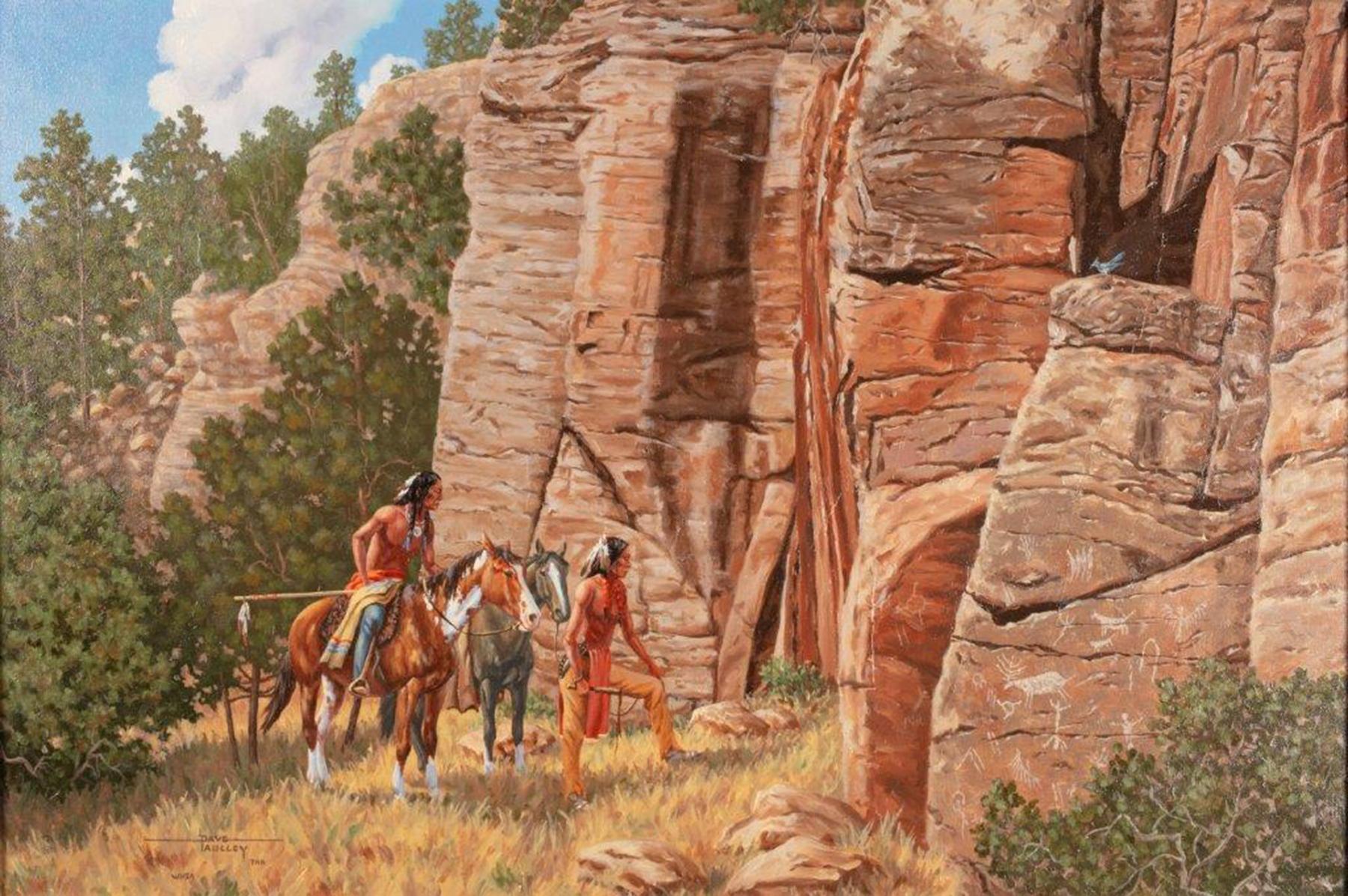Below are links to Wyoming Historical Society publications and to artwork produced for the Society. Also, if you are needing help in getting a book published that features Wyoming history please click here. For more details please email info@wyshs.org or 307.322.3014.
Image

contains over one hundred panels of petroglyphs depicting various
hunting scenes from the Paleo-Indian period, and depicts a difficult
passage of time for the coming of Euro-American settlers and the Plains Indians. To purchase a book visit store.wyshs.org.
Books Published by the Society
These books can be ordered via email to info@wyshs.org or from your local bookseller.
ALL NEW
- Wyoming History in Art featuring the works of the late Dave Paulley. The Society and its fundraising arm, the Wyoming Historical Foundation, have published a full color book featuring thirty paintings of important people and events in Wyoming history done by the late artist Dave Paulley, each with a full original narrative by Dr. Jeremy Johnston, author and historian. The original paintings were created in celebration of Wyoming's Centennial, and are held by the American Heritage Center. A limited number of these books have been printed. Get yours now for $39.95 plus applicable sales tax and shipping from store.wyshs.org.
- Snow Chi Minh Trail: The History of Interstate 80 50TH ANNIVERSARY EDITION by John Richard Waggener. This special Golden Anniversary edition includes updates, additional historical information, more maps and historical photographs made available to the author after the release of the 2nd revised edition in February 2018. OUT OF STOCK
- Locating the Iron Trail by Edward Gillette. Originally published in 1925 by the Christopher Publishing House and reprinted in 2015 by the Society. OUT OF STOCK
Calendars and Maps
- Calendar of Wyoming History (published yearly) and featuring more than two dozen historical photos and daily tidbits. Get yours now at store.wyshs.org.
Journals and Newsletters
Digital Collections
- University of Wyoming's Digital Collections
- American Heritage Center, University of Wyoming, Digitized Collections in Western History and Culture
- Wyoming State Archives Photo Collection
